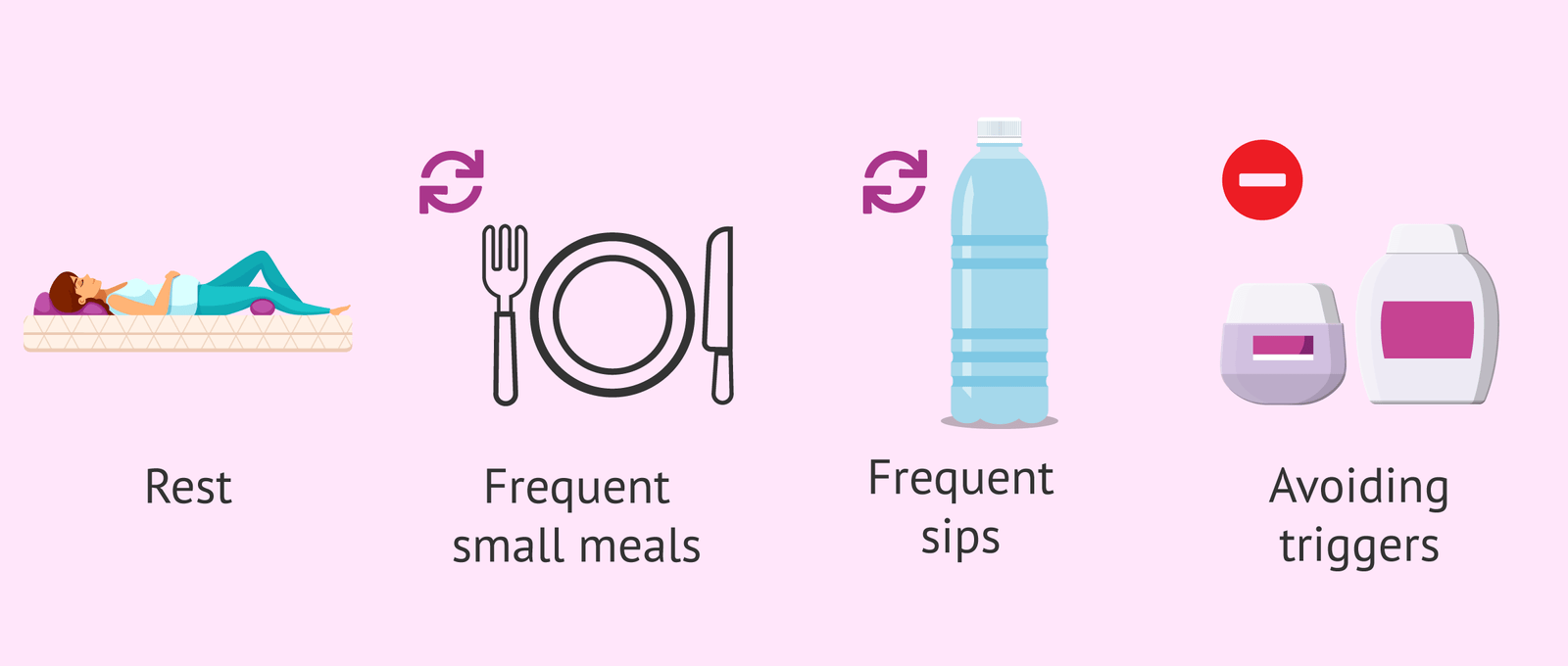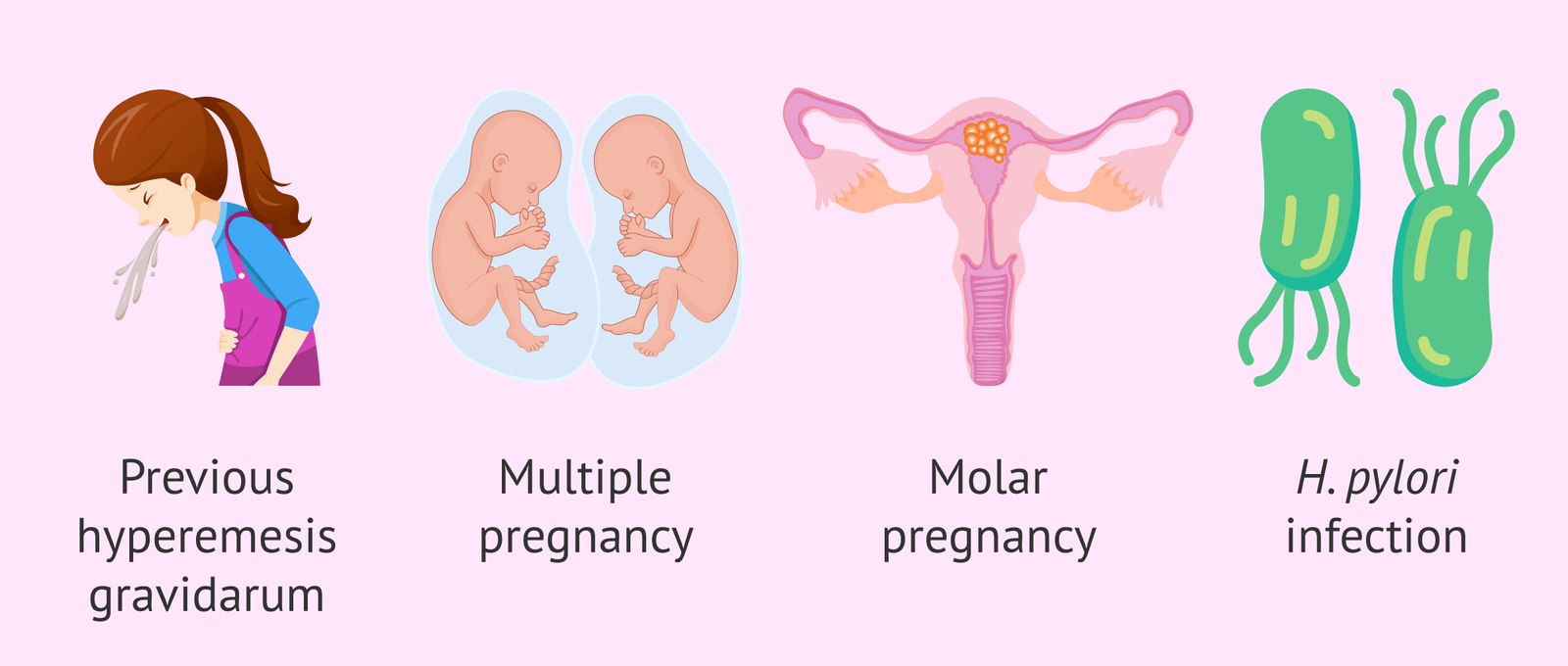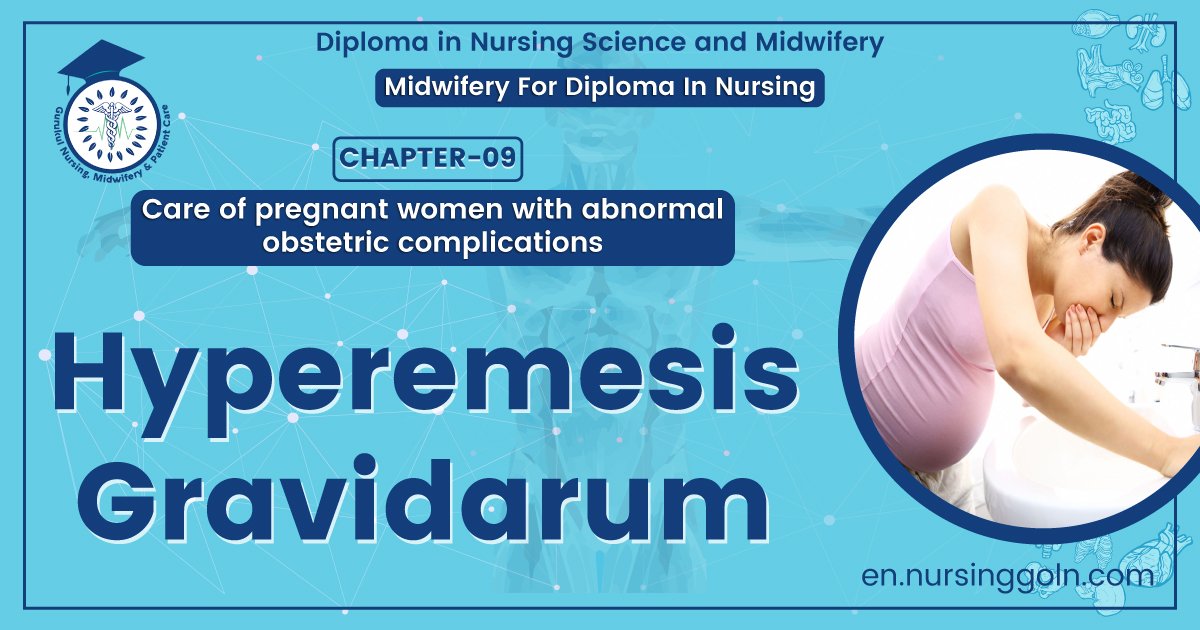Hyperemesis gravidarum – This course is designed to understand the care of pregnant women and newborn: antenatal, intra-natal and postnatal; breast feeding, family planning, newborn care and ethical issues, The aim of the course is to acquire knowledge and develop competencies regarding midwifery, complicated labour and newborn care including family planning.
Hyperemesis gravidarum
Hyperemesis gravidarum (HG) is a complication of pregnancy that is characterized by severe nausea and vomiting such that weight loss and dehydration occur.
Or
It is a severe type of vomiting of pregnancy which has got deleterious effect on the health of the mother &/or incapacitates her in day to day activities,

Causes of hyperemesis gravidarum:
Possible causes or contributing factors include the following:
➤ Rising levels of hormones, such as human chorionic gonadotropin (HCG), estrogen, and progesterone early in pregnancy.
➤ Increase in blood thyroxine levels, which has been documented in 70 percent of hyperemesis gravidarum cases, according to the HER Foundation.
➤ A multiple pregnancy (twins, triplets, etc.).
➤ Abnormal tissue growth in the uterus, called a hydatidiform mole.
➤ Regurgitation of the contents of the duodenum (upper small intestine) back into the stomach.
➤ Abnormalities of peristalsis (the way the gastrointestinal tract moves content along).
➤ Liver abnormalities.
➤ Abnormalities of fat in the blood.
➤ Inner ear problems.
➤ Infection with Helicobacter pylori, or H. pylori (the organism that causes stomach ulcers).
➤ Deficiency of the nutrients pyridoxine and zinc.
Risk factors of hyperemesis gravidarum:
➤ Having the condition during a previous pregnancy.
➤ Being pregnant with more than one baby.
➤ Being overweight
➤ Having a multiple pregnancy.
➤ Being pregnant for the first time.
➤ Having trophoblastic disease (abnormal growth of cells inside the uterus).
➤ Family history of other women developing the condition.

Signs and symptoms of hyperemesis gravidarum:
HG usually starts during the first trimester of pregnancy. Some of the most common symptoms of HG are:
➤ Severe nausea and vomiting.
➤ Vomiting more than three or four times per day.
➤ Food aversions.
➤ Weight loss of 5% or more of pre-pregnancy weight.
➤ Decrease in urination.
➤ Dehydration
➤ Headaches.
➤ Confusion.
➤ Fainting.
➤ loss of appetite
➤ feeling light-headed or dizzy
Or (Another answer)
Hyperemesis gravidarum may lead to the following symptoms and conditions:
➤ Severe nausea and vomiting.
➤ Dizziness, lightheadedness, and fainting.
➤ Increased salivation
➤ Anemia
➤ Headaches
➤ Confusion
➤ Yellowing of the skin and eyes (jaundice).
➤ Low blood pressure.
➤ Rapid heart rate.
➤ Overactive thyroid or parathyroid.
➤ Dehydration and production of ketones (sometimes leading to breath that smells “fruity”).
➤ Nutritional deficiencies.
➤ Metabolic imbalances.
➤ Increased sense of smell.
➤ Distorted sense of taste.
➤ Loss of skin elasticity.
➤ Loss of over 5 percent, and usually over 10 percent, of pre-pregnancy body weight.
➤ Difficulty with daily activities.
➤ Psychological issues many women with hyperemesis gravidarum also experience depression, mood changes, anxiety, or irritability.
Investigation of hyperemesis gravidarum:
➤ USG of lower abdomen:
✓ To confirm pregnancy &
✓ To exclude the other cause (H. mole & twin pregnancies).
➤ Urine analysis: Small in quantity, dark color, high specific gravity with acid reaction, occasional presence of acetone with protein & bile pigment.
➤ Serum electrolytes: decrease sodium, potassium and chloride.
➤ Blood urea: may be raised.
➤ Blood glucose: Hypoglycaemia.
➤ Blood: Hb%, TC,DC, ESR.
➤ Liver enzymes.
➤ RBS.
➤ ECG
Treatment of hyperemesis gravidarum:
General management:
1. Urgent hospitalization.
2. Nothing by mouth for at least 24 hours.
3. Oral route (both medication & food) should be used after significant improvement of the patient).
4. Amount of fluid required per day: previous days output + 3000 ml with 200 ml of 25% dextrose and 2 ml of vitamin B, 2 ml of vitamin c are given per day.
5. Intravenous fluid.
6. Electrolyte containing fluid is preferable.
7. Cholera saline or Hartman’s solution
8. Catheterization: To monitor urine output.
9. Encourage food and fluid high in potassium magnesium level.
10. Monitor laboratory values.
11. Maintain intake and output chart.
12. Correction of fluid and electrolyte balance.
13. Measure daily weight.
Specific management:
1. Anti-emetic: promethazine (25 mg I/M tds)
2. Hydrocortisone drip
3. Nutritional support.
Complications of Hyperemesis Gravidarum:
The main risks to women with hyperemesis gravidarum are
➤ dehydration
➤ electrolyte imbalances
➤ Shock.
➤ Acute renal failure.
Less common but severe complications of hyperemesis gravidarum include:
➤ Ruptured esophagus from forceful vomiting.
➤ Collapsed lung.
➤ Liver disease
➤ Blindness
➤ Brain swelling from malnutrition.
➤ Kidney failure
➤ Blood clots
➤ Seizures
➤ Coma
➤ Death

Biochemical changes in hyperemesis graviderum:
- Increase blood urea & uric acid.
- Hypoglycaemia
- Hypoproteineamia
- Hypovitaminosis

Difference between hyperemesis gravidarum and morning sickness:
| Morning Sickness | Hyperemesis Gravidarum |
| 1. Physiological phenomenon. | 1. Pathological condition. |
| 2. Occurs in early morning and caeses at noon | 2. Occurs both at day and night. |
| 3. General health of the mother is unaffected. | 3. There is deterioration of general health of the mother. |
| 4. No risk for the foetus. | 4. There is risk for the foetus. |
Read More….
